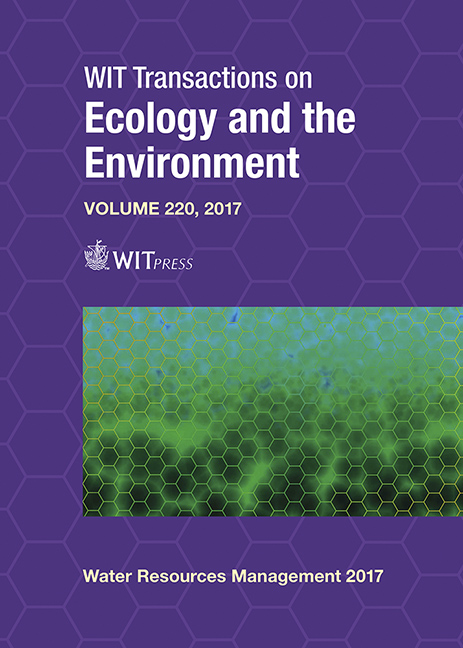REMOVAL OF HEAVY METALS FROM WATER BY WOOD-BASED LIGNOCELLULOCIS MATERIALS
Price
Free (open access)
Transaction
Volume
220
Pages
11
Page Range
81 - 91
Published
2017
Size
599 kb
Paper DOI
10.2495/WRM170081
Copyright
WIT Press
Author(s)
BATRIC PESIC
Abstract
Drinking water, particularly mine and industrial waters, may contain concentrations of heavy metals above the limits defined by the intended use. Therefore, hazardous heavy metals must be removed by water treatment, which in turn must satisfy the key criteria: to be efficient and inexpensive. The simplest method for treatment of mine and industrial waters is by chemical precipitation in the form of metal hydroxides. For treatment of drinking water, characterized by very low concentration of heavy metals, the adsorption on a solid support, such as activated carbon, is a common practice. The major deficiency of using activated carbon is the slow kinetics, low loading capacity, and high costs. For that reason, substantial research efforts are directed toward the use of natural sorbents, such as cellulose from wood. In this paper, the results will discuss the use of cellulose from wood for removal of cadmium from water of similar characteristics as drinking water. The other results will point to the treatment of water characterized with much higher concentrations of heavy metals, as found in mine waters. The adsorption studies were performed as a function of typical parameters: pH, concentration, temperature, etc. To enhance the sorption capacity and kinetics, the cellulose molecules were modified by esterification, which was found highly beneficial. Regarding the source of cellulose, several wood species were examined. Among these, cottonwood consistently showed superior performance.
Keywords
absorption, cadmium, lead, mercury, copper, zinc, cellulose, kinetics





